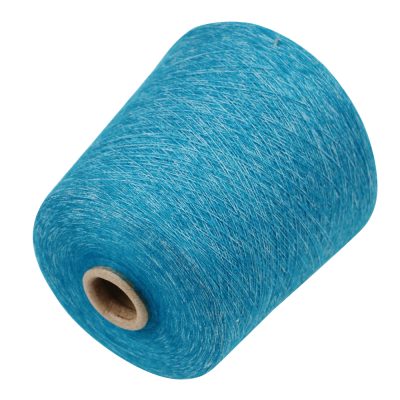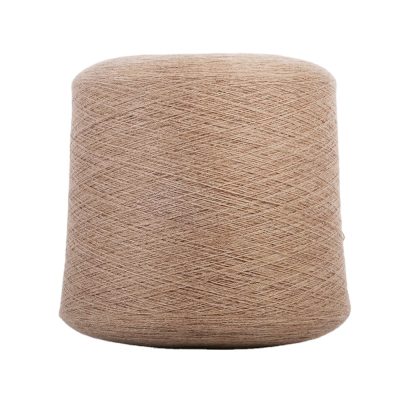1. Ring spinning
Ring spinning is the most commonly used spinning method on the market. Ring spinning means that the sliver or roving is drawn into the fiber sliver through the ring traveler rotation, the bobbin winding speed is faster than the traveler, and the cotton yarn is twisted into spun yarn, which is widely used in spinning of various short fibers. Yarn works. Such as carding, combing and blending, the traveller is driven by the bobbin through the yarn to rotate around the ring for twisting. At the same time, the friction of the ring makes the speed slightly lower than that of the bobbin to be wound. The spinning speed is high, and the shape of the ring-spun yarn is a conical spiral with most fibers transferred inside and outside, which makes the fibers entangle and connect inside and outside the yarn. The yarn has a compact structure and high strength. It is suitable for thread making, weaving and knitting, etc. Various products.
2. Agglomeration spinning
Agglomeration spinning is a new spinning technology for spinning on an improved new ring spinning frame. The spinning mechanism is mainly: a fiber aggregation zone is added before the traction device of the ring spinning frame, which basically eliminates the spinning triangle area between the front roller and the twisting point. After the fiber strands are output from the front opening of the front roller, they first pass through the mesh apron of the special-shaped suction tube. The strands move on the mesh apron. Due to the contraction and polymerization of the airflow, the strands are gathered through the suction groove of the special-shaped tube. Turning, it gradually turns from a flat ribbon to a cylinder, and the ends of the fibers are twisted into the yarn, so the yarn is very tight, and the yarn has a smooth appearance and less hairiness. The concentrated spinning yarn has higher strength and less hairiness. The phenomenon of sanding is the least likely to occur during the knitting process.
Contrast between traditional ring spinning and cluster spinning. The purpose of cluster spinning is to make the fibers as parallel and close as possible before the yarn is twisted. This is an important criterion for high-quality cluster spinning yarns. Making the fibers as parallel and consistent as possible before twisting is a prerequisite for its advantages. The advantages of cluster spinning are: the yarn hairiness is very small, especially the hairiness above 3 mm, and it also improves the efficiency of the downstream loom, and the smoothness of the cloth surface; the yarn has a large cohesive force and high strength; Uneven drying, coarse and detailed indicators are better than traditional yarns. However, the high cost of agglomerated spinning equipment has increased the equipment investment of the spinning mill, and in addition to the great improvement in the hairiness index, the improvement of other yarn indexes such as evenness, thickness, and detail is not large.
























